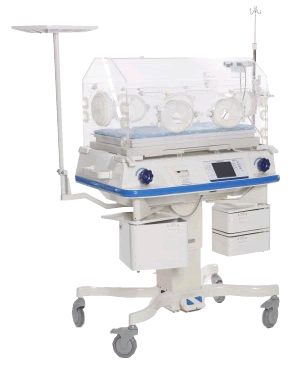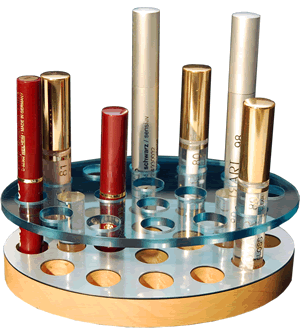 |
PMMA - Polymethyl methacrylate |
PMMA (polymethyl methacrylate) is a transparent thermoplastic, commonly known as acrylic glass or acrylic. It is often used as an alternative to glass, because it is light and shatterproof. From a chemical point of view, it is the synthetic polymer of methyl methacrylate.
The history of PMMA origins is a very long one. In 1843, the first acrylic acid was created. Methacrylic acid, deduced from acrylic acid, was created in 1865. The ester methyl methacrylate accrues by the reaction between methacrylic acid and methanol and in the year 1877 the German chemists Fittig and Paul detected the polymerization process, which transforms methyl methacrylate into polymethyl methacrylate.
The German chemist Otto Röhm patented the brand name Plexiglas in the year 1933 and the first commercially feasible production of acrylic safety glass started in 1936. Also in 1936, one of the exhibits of the Berlin exhibition “Deutschland” was a “glass violin”. It was made of Plexiglas, like the windows of a “Zeppelin”, which was presented as well, and caused a sensation. During the years before World War II, a so called “Plexiglas Quartet” was playing these glass violins on the roof garden of the exclusive Berlin Hotel Eden and whenever Otto Röhm stayed in town, he loved to listen to their music. |
PMMA has been offered under various brand names, such as Lucite, Optix and Perspex to name just a few. In the former COMECON-countries PMMA was called Piacryl.
In the early 1930's, it was introduced by Imperial Chemical Industries (ICI) as a cast sheet material called Perspex. Initially, it was available only as sheet and cast rod and was used for the production of various articles using thermoforming, machining and engraving. Its high light transmission made it suitable for lighted advertising and display. The possibility to polymerize methyl methacrylate in molds using a polymer/monomer slurry made it perfect for the production of dentures and for encasing objects for display. In 1939, the first plastic contact lenses were made of PMMA. In 1947, acrylic baths were introduced in Australia, but it took another 10 years until they appeared in Europe.
Today, PMMA is used more than ever. Despite the fact that acrylic plastics are one of the oldest plastic materials in use today, their advantages of outdoor resistance and optical clarity still make them the material of choice for many applications.
|
|
PMMA Properties
The density of PMMA is 1.17–1.20 g/cm3, which is less than half of the density of glass. It has a good impact strength, higher than that of glass and polystyrene, but still significantly lower than polycarbonate and some other engineered polymers. Visible light transmission of PMMA is up to 92% (3 mm thickness) and it shows a reflection of about 4% of its surfaces due to its refractive index (1.4914 at 587.6 nm). It filters UV-light at wave lengths below approx. 300 nm and some producers add coatings or additives to improve absorption.
PMMA flushes and disperses in various organic solvents. Due to its easily hydrolyzed ester groups, its resistance to various other chemicals is poor. Regardless, its environmental stability is superior to most other plastics which often makes it the material of choice for outdoor applications.
|
PMMA Applications
PMMA´s high transparency makes it an ideal alternative to glass, especially where impact or weight is a critical issue. Furthermore, PMMA is compatible with human tissue, making it a useful material for prosthetics and transplants, dentures, optical lenses etc.
PMMA is also widely used for daily necessities such as pens, hair clips, buttons, a variety of containers and other household goods. Within the construction industry, there is prevalent use of PMMA for indoor and outdoor lighting, signal display, furniture, partition material, solar energy collector housings, colored glass baths etc. Within the electronic industry, it is utilized as a light guide for backlights in TFT-LCDs or for the higher impact resistance of laser disc optical media (CD, DVD).
During World War II acrylic glass was used for submarine periscopes, windshields and gun turrets for airplanes.
|
Other commonly used thermoplastics
|
 |
|